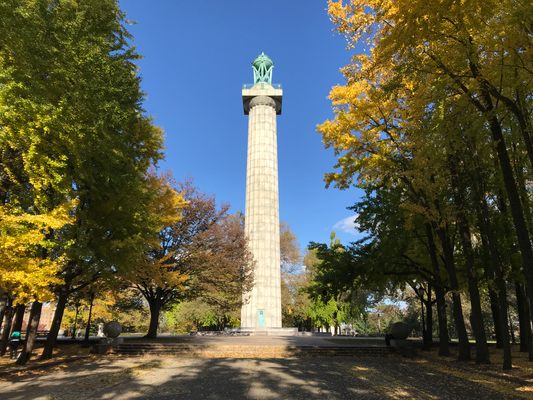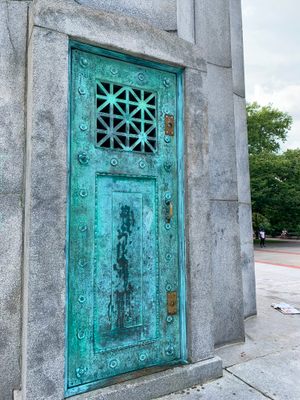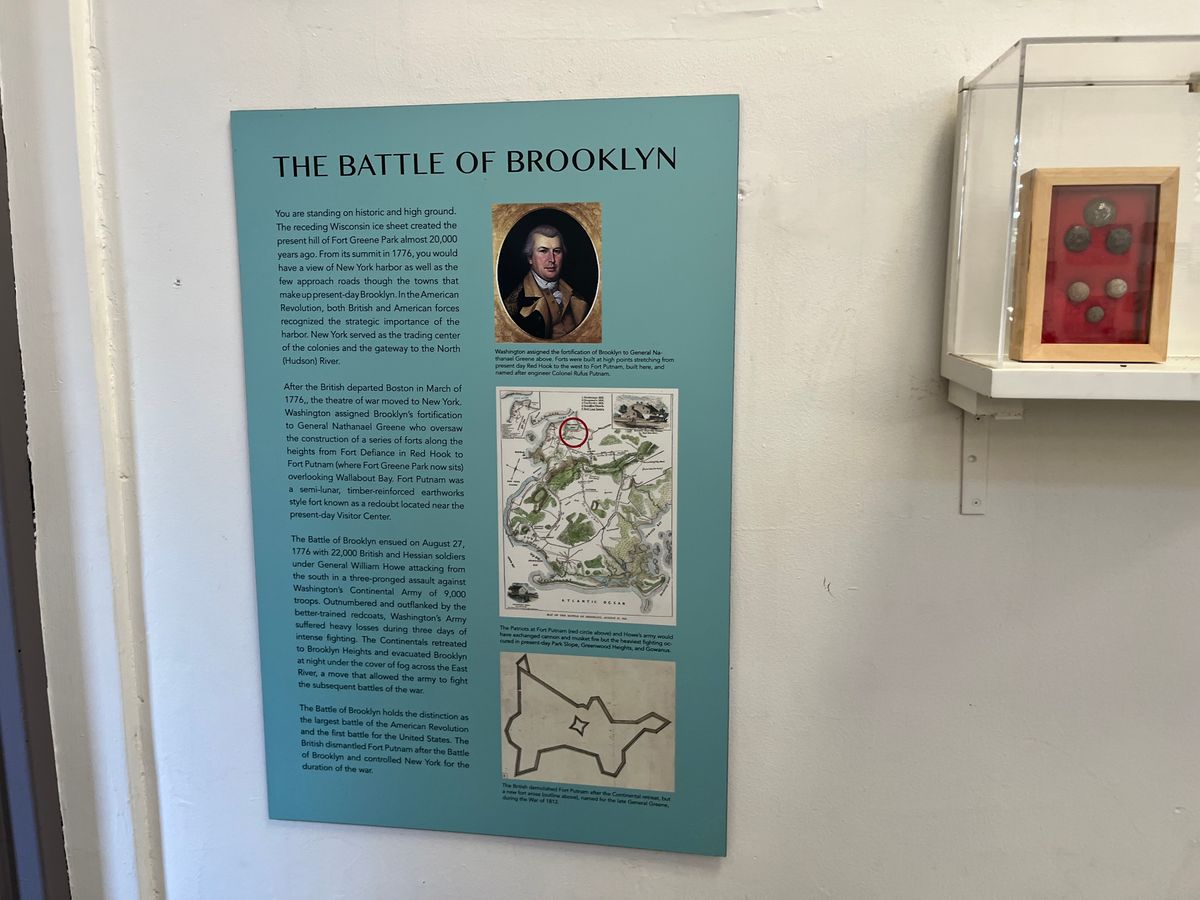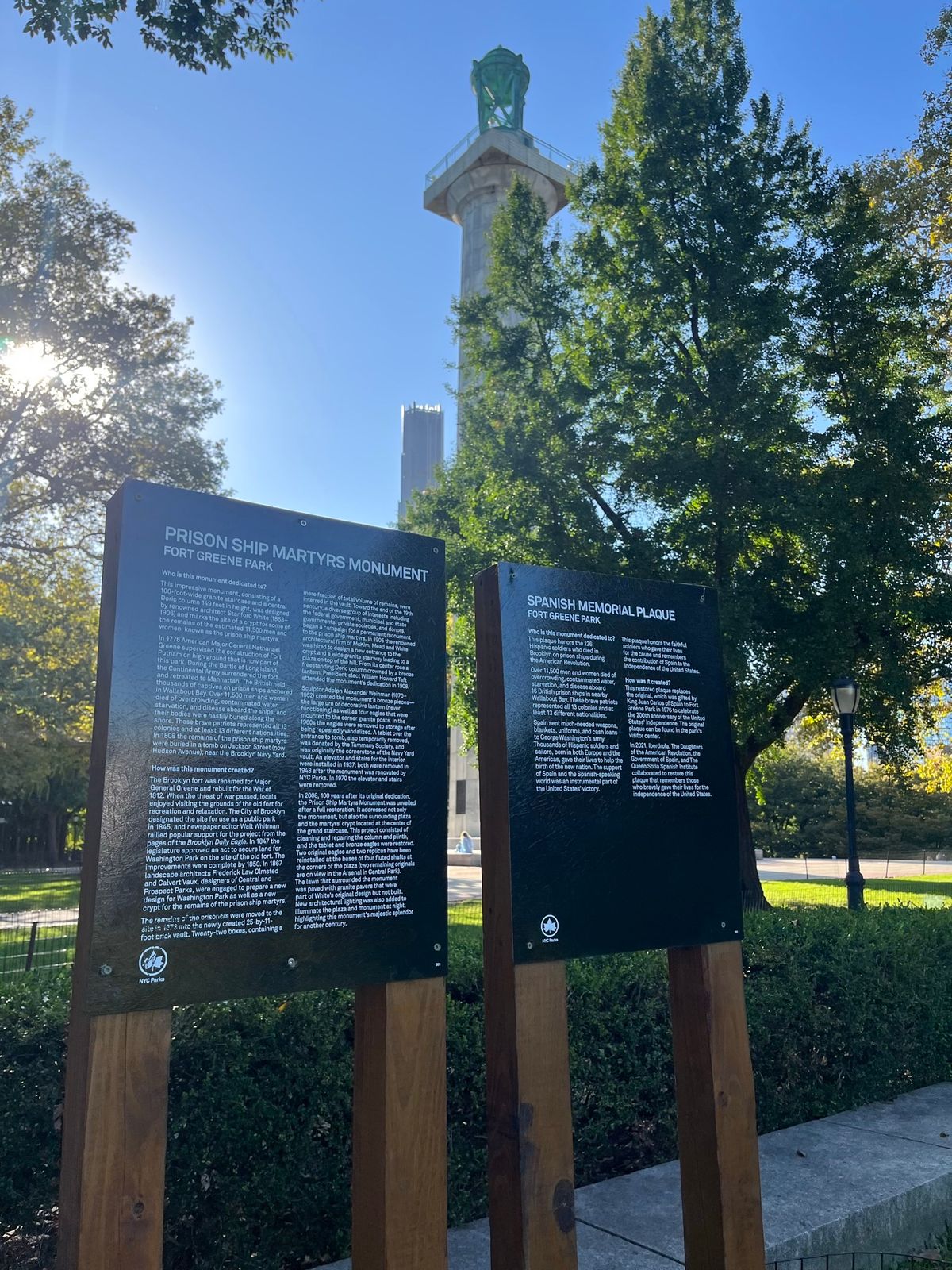About
During the Revolutionary War, more than 11,500 American prisoners died aboard British prison ships anchored in New York Harbor. The prisoners, both men and women, largely died because of the poor conditions on the ships, facing inhumane hardships such as contaminated water and starvation. The remains of some of the prisoners are now buried in a crypt (not open to the public) at the base of this memorial.
The current monument was installed in 1908. By the 1970s, graffiti marred much of the memorial, and its four bronze eagles were removed for safekeeping. The moment was restored in the 2000s and re-dedicated in 2008.
Originally named Washington Park, Fort Greene Park and the memorial have links to a number of notable New York names. Frederick Law Olmsted and Calvert Vaux, who also designed Central Park and Brooklyn's Prospect Park, were the designers. The entrance to the crypt was designed by architectural firm McKim, Mead, and White, and the bronze parts of the monument were designed by sculptor Adolph Alexander Weinman, also known for his work on the Manhattan Municipal Building.
Related Tags
Know Before You Go
There is a visitor's center on-site with displays about the park's history as well as restrooms that are open to the public.
Community Contributors
Added By
Published
November 18, 2019
Sources
- https://en.wikipedia.org/wiki/Prison_Ship_Martyrs%27_Monument
- https://en.wikipedia.org/wiki/Prison_Ship_Martyrs%27_Monument
- https://untappedcities.com/2018/12/13/photos-inside-the-prison-ship-martyrs-monument-in-brooklyn/
- https://ny.curbed.com/2017/1/25/14383790/fort-greene-park-national-park-service-monument

















































